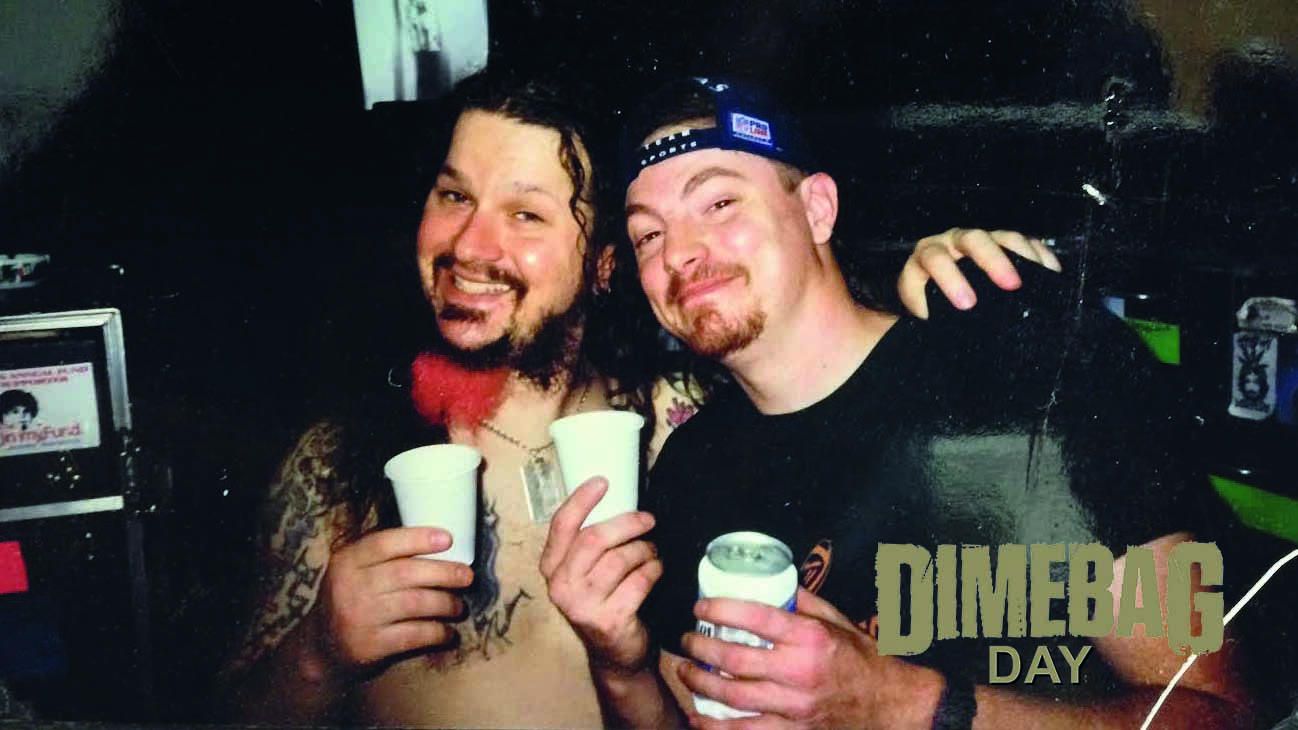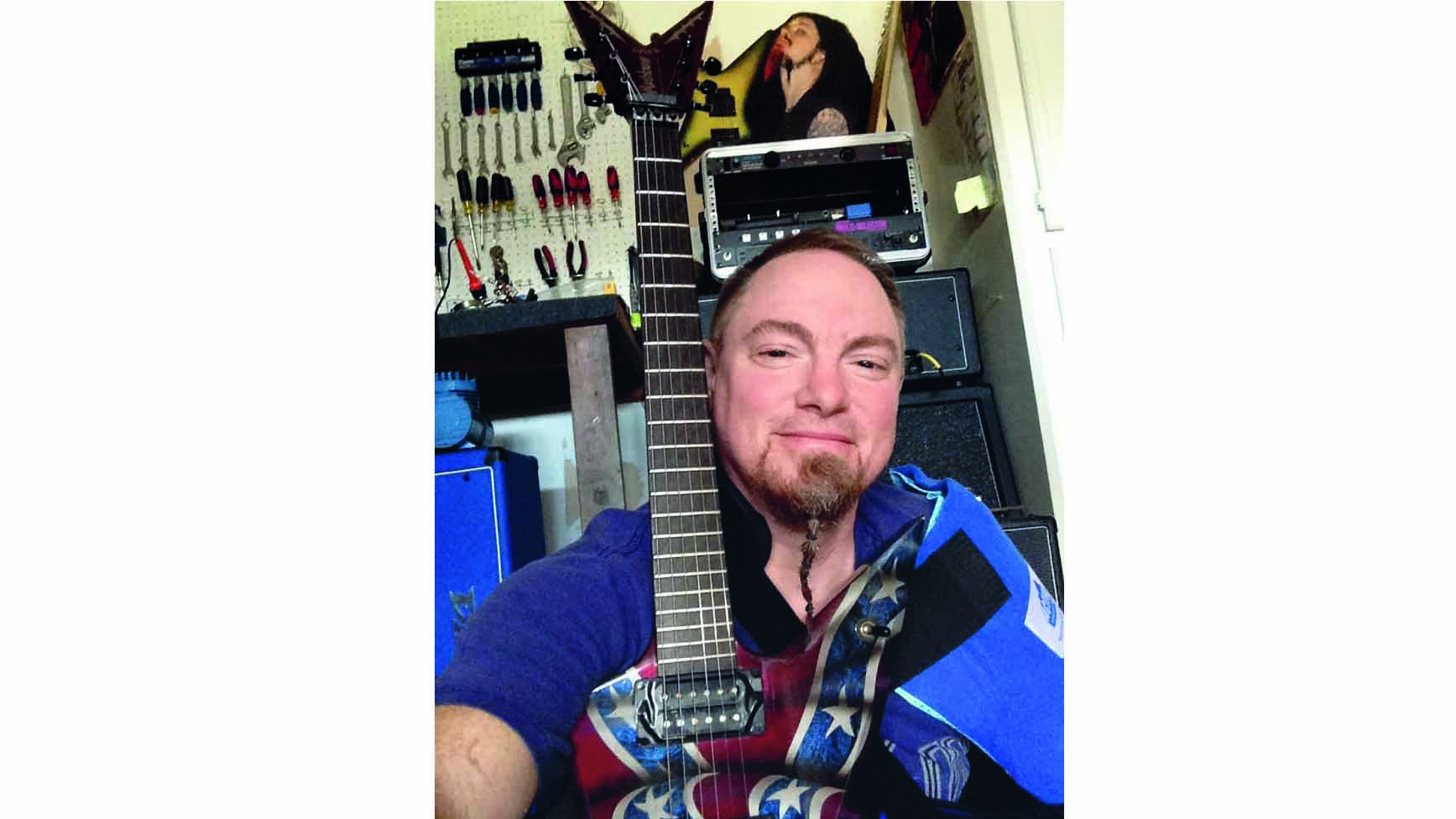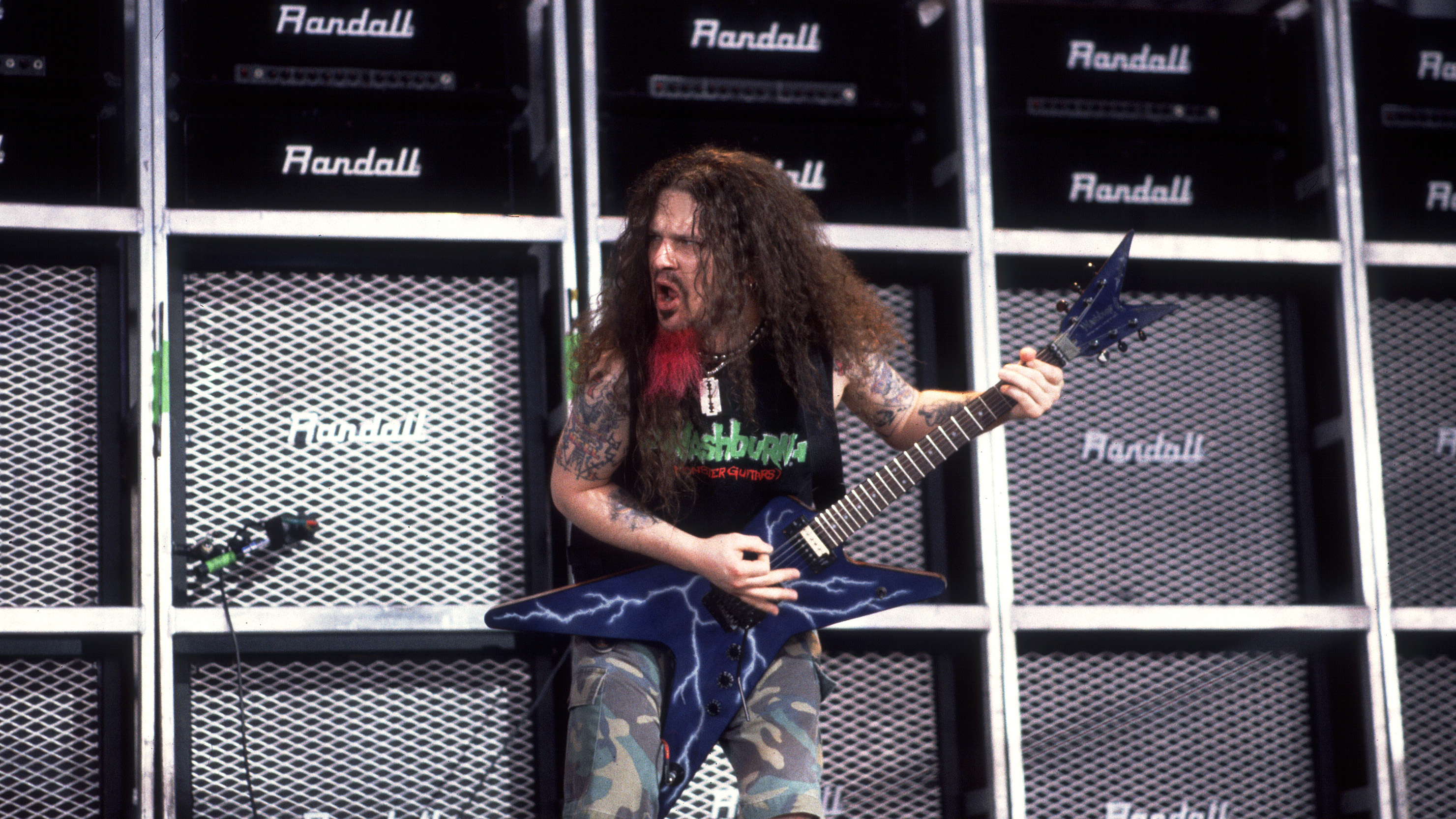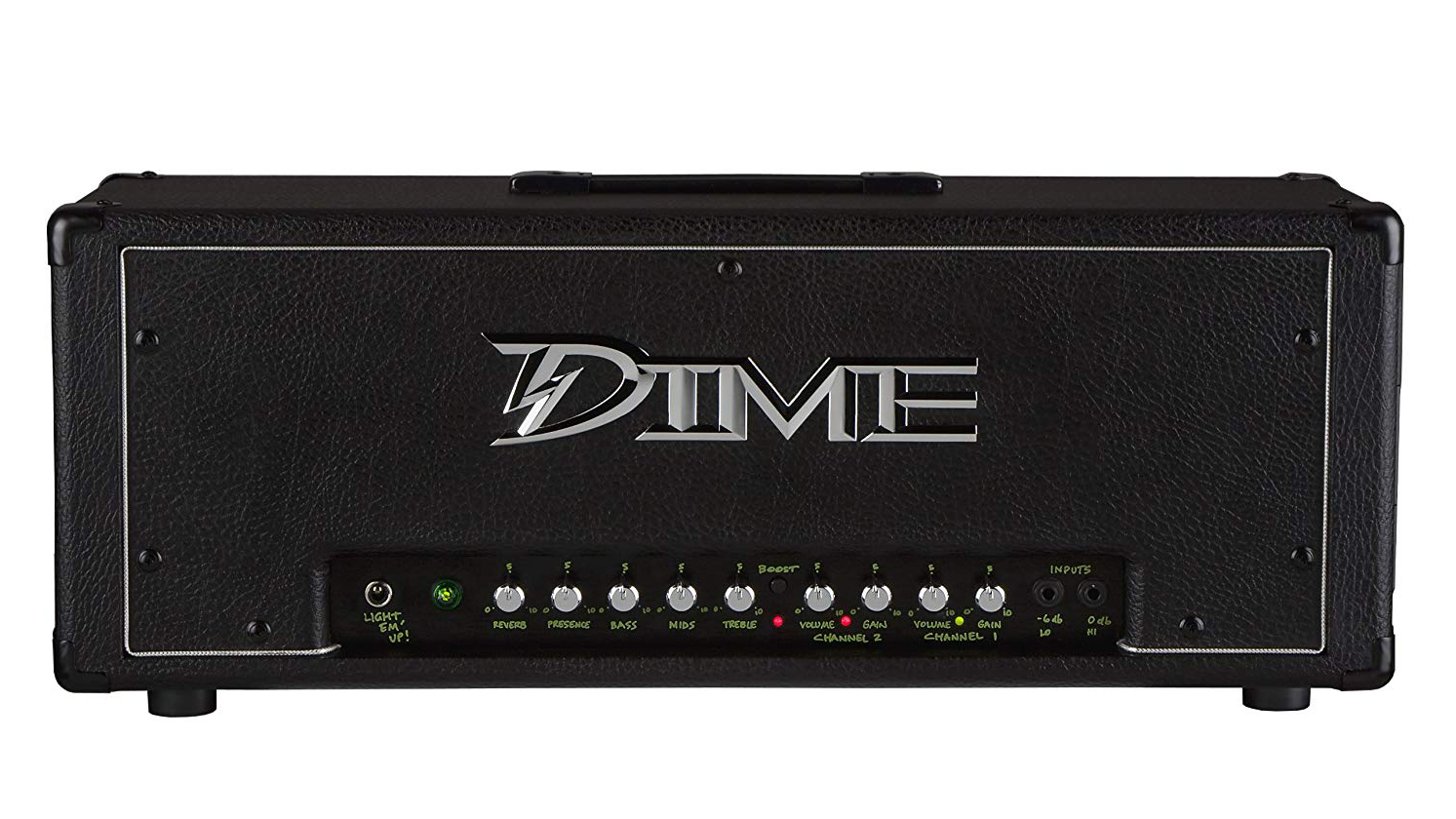Dimebag day: Dime's longtime tech Grady Champion talks guitars, amps and tone
"I had to convince my parents that going on the road with Pantera was somehow better than going to college!”

Dimebag day: To mark the 15th anniversary of Dimebag Darrell’s passing, we’re revisiting classic interviews to celebrate his legacy
Grady Champion was Dimebag’s guitar tech throughout his career with Pantera. Here, he discusses the evolution of Dimebag’s guitar sound, the importance of using a noise gate, and the time Dimebag’s wireless system broke in front of more than a million people…
How did you first meet Dime?
“I knew Darrell a little in Junior High. Our friendship really blossomed when the Pantera guys let a band I was playing in open up over 100 shows with them in the club days. The night they were basically signed was the night I became his tech. I just had to convince my parents that going on the road with Pantera was somehow better than going to college!”
Some friends and I used to ride our bikes to where he was giving music lessons and sit outside just to hear him
What were your first impressions of Dime’s playing?
“I was simply amazed that this guy could play so fast, have so much control, and could write songs all with relative ease. Some friends and I used to ride our bikes to where he was giving music lessons and sit outside just to hear him.”
How did Dime first hit on his famous ‘scooped’ tone?
Want all the hottest music and gear news, reviews, deals, features and more, direct to your inbox? Sign up here.
“I can’t say for sure. He met James Hetfield early on. From what I can remember of the story, James walked up to one of his Randalls and dumped the mids and kinda just said 'There!’, but I wasn’t there and many years have passed, so I hope I am close.”
Was it the scoop that made his sound so tight?
“It was more the gate than the EQ. The frequencies in the Furman PQ-3 and PQ-4 that were cut, were boosted with the six-band, and vice-versa. The EQs worked like a giant gain stage. I kept the gate tight. The Rocktron Guitar Silencer was the favourite here.”

Dime favoured solid-state amps, where did this preference come from?
“I believe he won an RG100 in a contest, and the Randall sound became his trademark.”
There’s some confusion surrounding the Bill Lawrence pickups in Dime’s guitars, could you confirm which brand he used?
“My memory on this isn’t too clear, sadly. I remember that we first hunted them down by going to pawn shops. If there was a guitar with one in it, he’d buy it and we’d pull it out. I also contacted Bill around ’94, I believe, and he sent out a couple of the ‘integrated coil’ pickups. I don’t remember what happened with that, though. He got the Washburn deal soon after that and the Bill Lawrence pickups were made by a different company, I believe...”
There’s a story about the Dean From Hell going missing, too…
“Well, how I wasn’t fired for that I will never know! It was his birthday and it was a show day. I brought it to the dressing room because it was going to be shipped to Washburn the next day to have them go over it and start making the Dime models.
"It somehow ended up being the table for the birthday cake and I left the gig without it. I swore that I had put it in the bay of the bus. Anyways, a man cleaning up after we left found it, thought it was junk and put it in his garage. MTV put out a newsflash, and it was returned.
"I remember Dime telling me that I had to pay the reward money because ‘he wasn’t eating it’. Fair enough! It was returned shortly after.”

How did Dime’s amp rig evolve?
“We started out with the Randall RG100 heads on the cabs with a little eight-space rack for the outboard gear. Then we used three of the Randall RG100 HT rackmount heads, along with the other gear, in one rack unit.
"Next was when we got the Century 200s. We used six of those with a Bradshaw splitter. We ended up taking a Century 200 out and put in a Mesa-Boogie Mk IV for the clean stuff. That was the mainstay of the rig for some time.
"When he did the Randall Warhead, we ended up just using it for clean stuff. We switched between using the PQ-3 and PQ-4, the PQ-4 getting most of the work. The Rocktron Guitar Silencer was the mainstay for the gate. An MXR Flanger/Doubler was used in the main ‘wet’ head loop 100 per cent of the time.
"We used two Whammy pedals (I had control of one), a wah, and also on the ‘wet’ head was a momentary reverb, switching dirty to clean with a Whirlwind A/B box.”
Dime would hand me his guitar sometimes at the end of Primal Concrete Sledge to finish the song so he could run around and throw picks
Did you ever jam with Dime?
“I did the occasional jam on stage. Dime would hand me his guitar sometimes at the end of Primal Concrete Sledge to finish the song so he could run around and throw picks. I played Seek And Destroy with them while he sang.
"Dime and I did a few recordings of tunes we wrote. played some harmony lead stuff, which he had to dumb way down to my level.”
How many guitars did Dimebag own?
“When I did the last inventory for him in 2000, he had about 250 guitars. I loved the Dean From Hell and Tobacco Burst Dean. I also loved the way the VW Dime Slime felt. The snakeskin Washburn was a beast! I miss putting my hand on all of them, really.
"The one guitar I disliked was the Reinventing The Steel diamond plate guitar. Very heavy and just sounded like a buzzsaw."
Were there any surprise guitars in his collection outside of the more metal ones?
“He had some Strats, Teles, Les Pauls, Rickenbackers… some of the classic designs.”

You were involved in the Dime amp range, could you tell us about that?
“I was very excited. Rita called and asked for me to be involved. I met with [Dean Guitars owner] Elliott Rubinson, and it was on. Gary Sunda [former amp designer for Randall] was building them, and that told me right away it would be great.
"They sent me a prototype, I suggested to put in two effects loops, a little more gain and a little more bottom. That was it! All the handwriting is mine [under the controls] that I did before the NAMM show. I thought I was doing scratch pieces, but it turned out to be the permanent one.
"The one thing I liked about them was the affordability. If kids wanted to sound like Dime, they could for cheap. It’s basically a one-dimensional head, but that’s what it was made for. I have dreams of working with another company some day to help create the ultimate Dime tribute head and cab.”
What’s your favourite memory of working with Dimebag?
“One thing that sticks in my head is the Monsters Of Rock show in Moscow in ’91. Wireless technology was VHF and one channel at the time. I turned the rig on, and we had about 15 minutes before the show. Russian walkie-talkies were coming through the rig, very Spinal Tap-like.
"The stage was the biggest either of us had seen and I told him he was gonna have to be on a cable. ‘There is no way I am going on this mother fuckin’ stage with a cable!’ A pretty heated argument ensued, I was out of options.
"A tech for Metallica (Andy Battye) came running up with one of Jason Newsted’s back-up units and saved the day just seconds before showtime. He was a monster that gig and I get chills watching the footage.”
Total Guitar is Europe's best-selling guitar magazine.
Every month we feature interviews with the biggest names and hottest new acts in guitar land, plus Guest Lessons from the stars.
Finally, our Rocked & Rated section is the place to go for reviews, round-ups and help setting up your guitars and gear.
Subscribe: http://bit.ly/totalguitar
